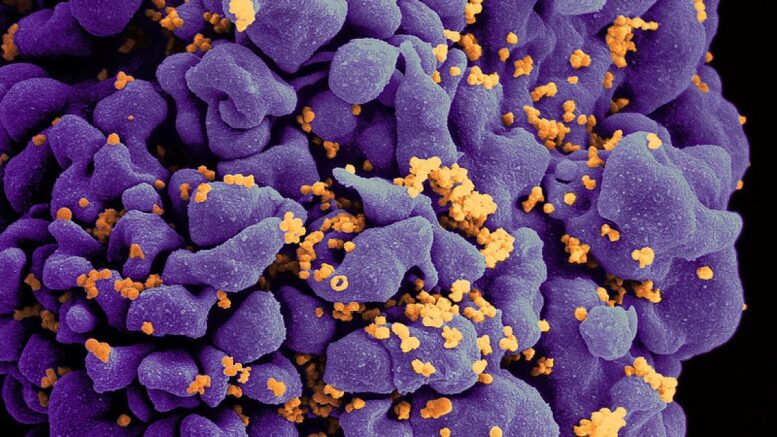A new paper in Molecular Biology and Evolution finds that HIV populations in people with higher viral loads also have higher rates of viral recombination. In effect, the more HIV in the blood, the easier it is for the virus to diversify.
One of the reasons HIV has historically been so difficult to combat is the virus’s exceptionally high rate of recombination. Recombination enables the exchange of genetic information across strains of the virus and drives HIV’s evolution within people. This genetic exchange helps the virus evade the immune system and become resistant to many drugs designed to treat HIV.
More generally, recombination is an important evolutionary driver, permitting organisms to purge destructive mutations and combine beneficial ones. Despite its importance, scientists do not yet understand how HIV’s recombination rate varies throughout an infection or between different people. Understanding the factors that impact recombination rate in a well-studied system such as HIV can help uncover some of the effects that recombination has on evolution more broadly.
One important yet understudied step in HIV recombination is coinfection, in which two different virus particles infect the same cell. Despite longstanding interest in HIV recombination, we do not yet understand if variation in the rate of co-infection could lead to variation in recombination rate. While studies of HIV in cell cultures and mice have demonstrated that increased coinfection is associated with an increase in recombinant viruses, it is unknown if this effect is found in people living with HIV.
The researchers involved with this study hypothesized that people with higher viral loads (more HIV in the blood) would have more cells that were coinfected, which would lead to higher rates of recombination for the virus. To investigate this hypothesis, they developed a new approach called Recombination Analysis via Time Series Linkage Decay (RATS-LD) to quantify recombination using genetic associations between mutations over time.
This investigation found that while HIV populations with viral loads in the lowest third of the data set have recombination rates in line with previous estimates, populations with viral loads in the upper third have a median recombination rate that is nearly six-fold higher. Furthermore, the researchers observe patterns of viral load and effective recombination rate increasing simultaneously within single individuals.
These results suggest that rates of HIV recombination can be even more extreme than researchers recognized previously. Beyond HIV, many organisms such as bacteria and plants do not need to recombine to reproduce but can benefit from it. To exchange genetic material, these organisms also rely on two different genomes meeting each other at the same place and time. Because of this, the researchers’ findings also suggest that population density could influence the effective rate of recombination across multiple settings.
“An explosion of sequencing data over the past few decades has given geneticists a deeper understanding that recombination rates can be context-dependent and are influenced by many different molecular factors,” said Elena V. Romero, one of the authors of the paper. “Here, we show that population density may serve as one of those previously underappreciated factors for viruses.”
The paper, “Elevated HIV viral load is associated with higher recombination rate in vivo,” is available at: https://academic.oup.com/mbe/article-lookup/doi/10.1093/molbev/msad260.
Source: Oxford University Press
